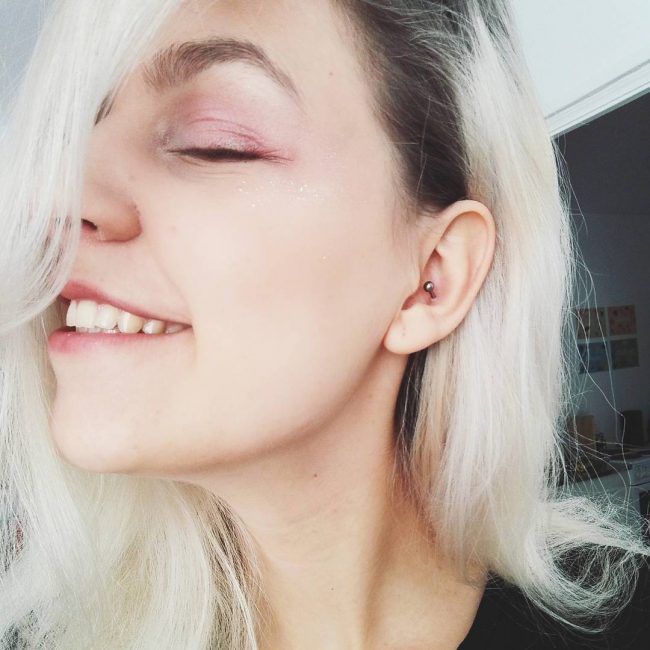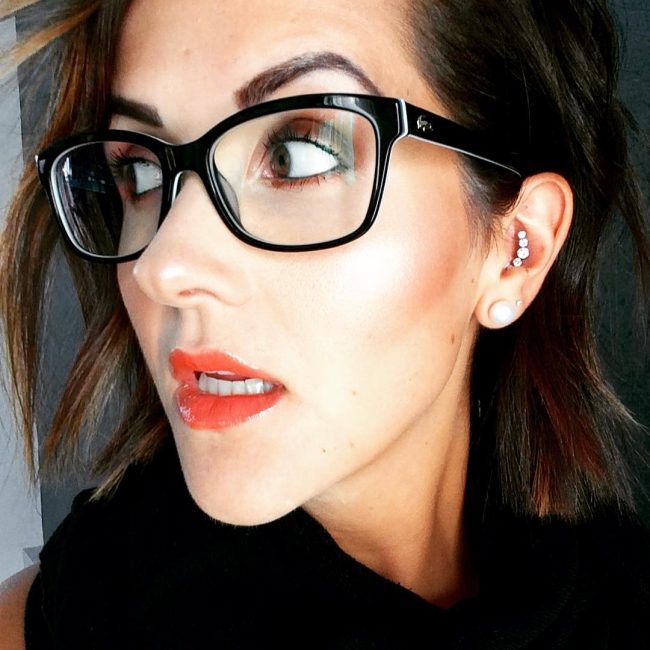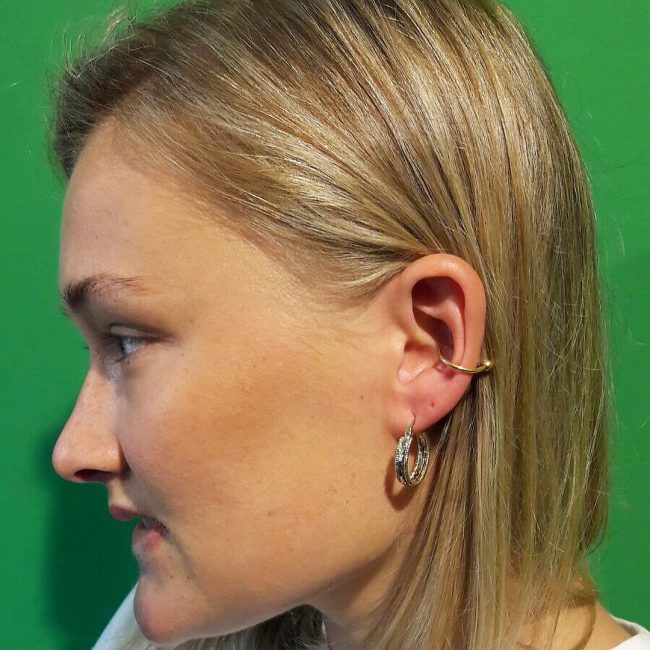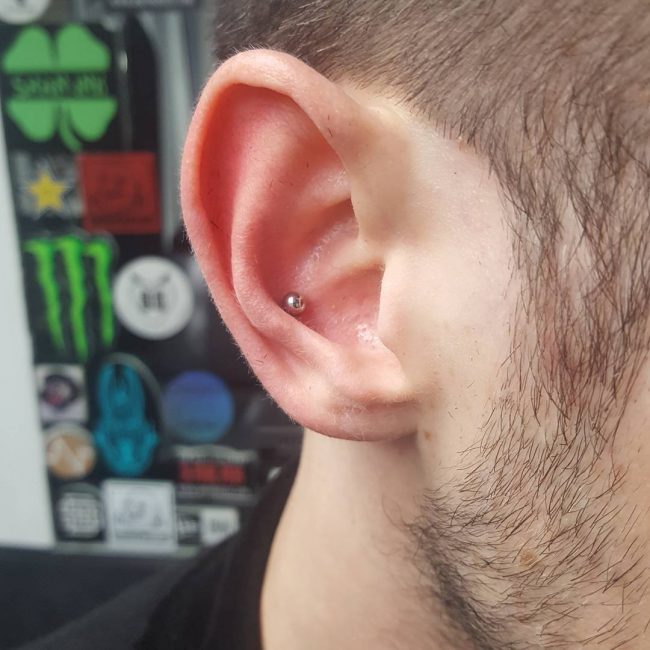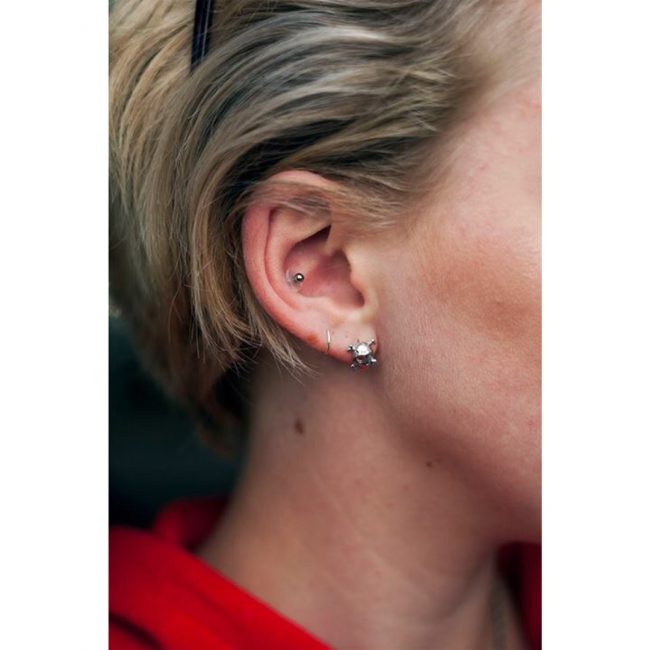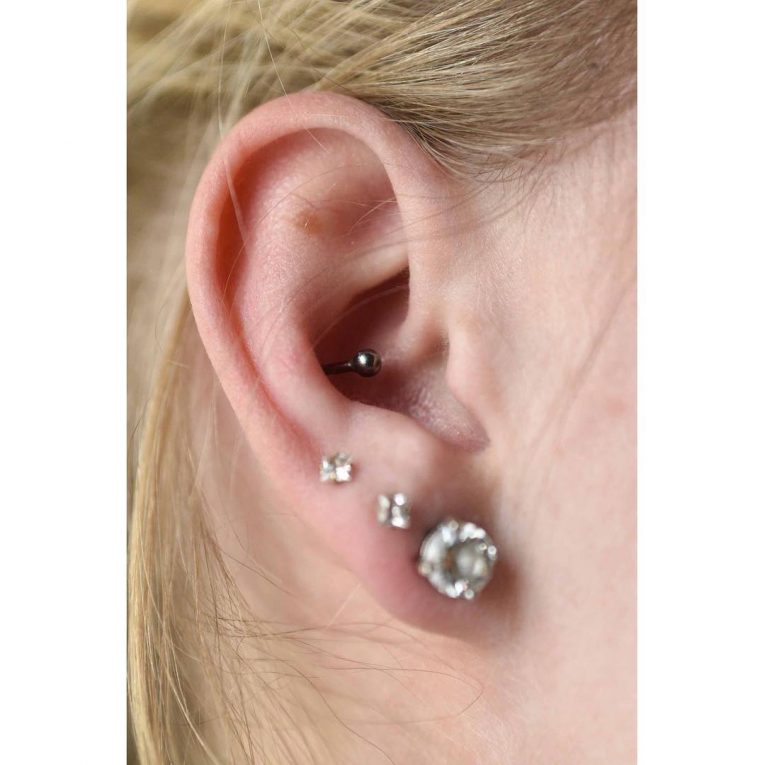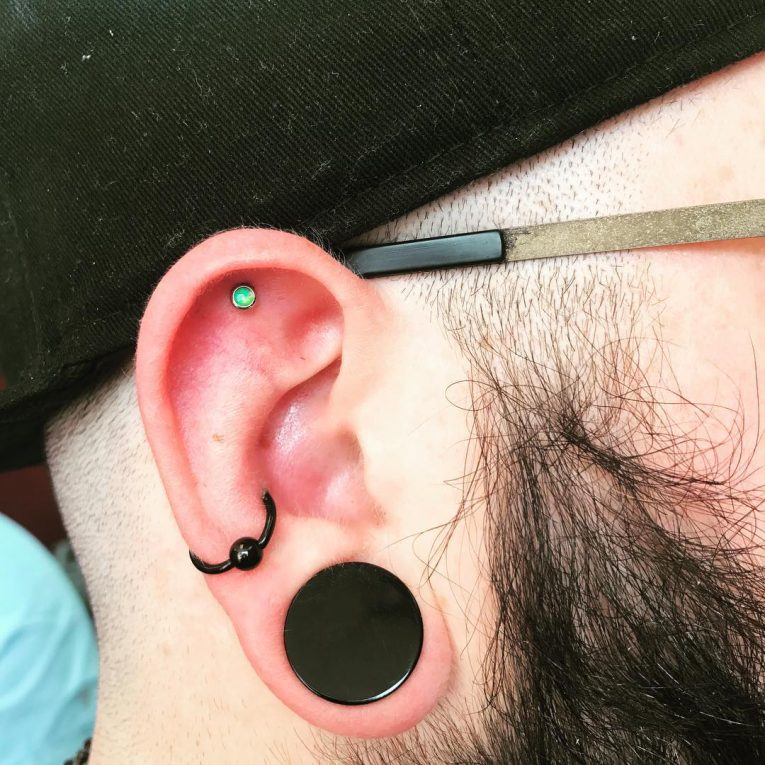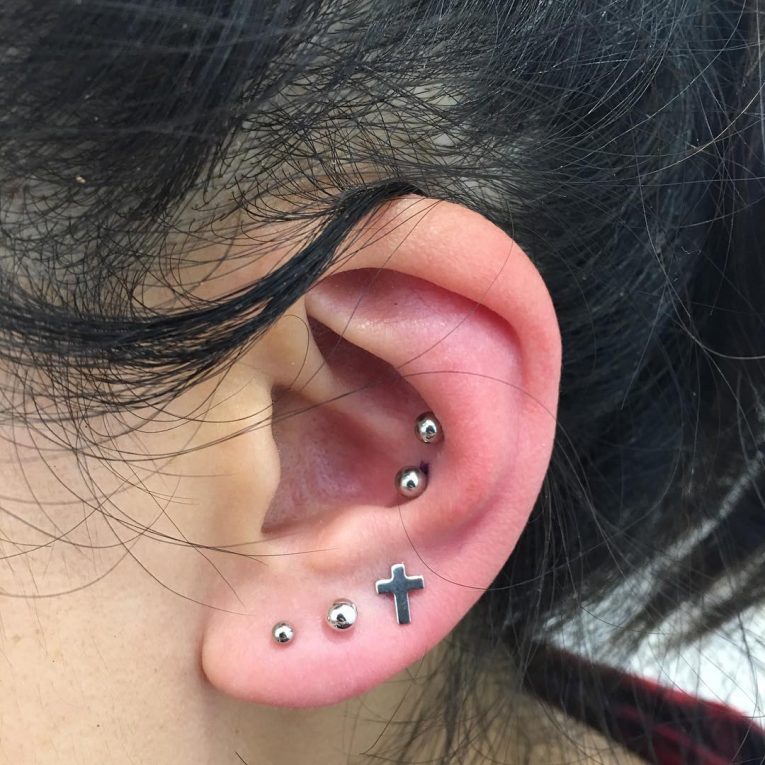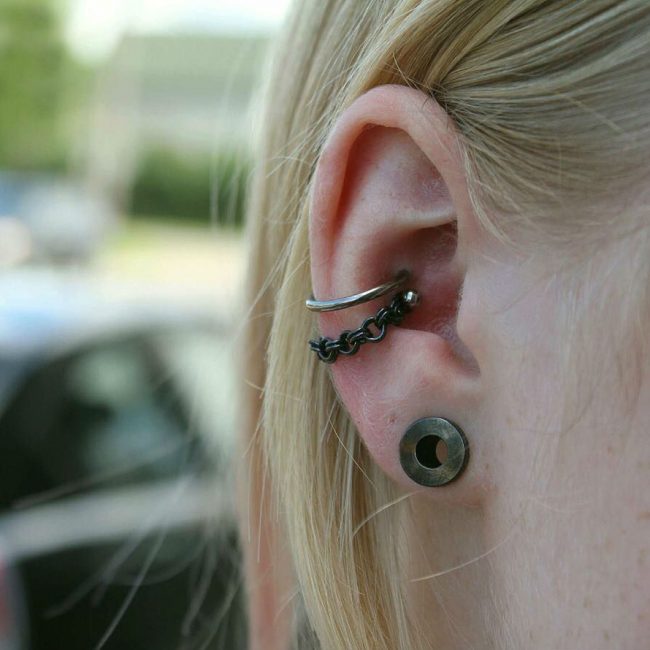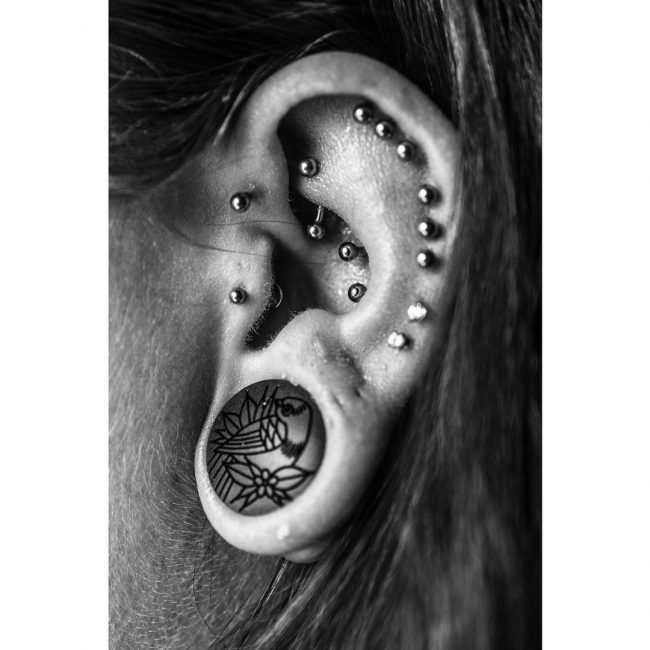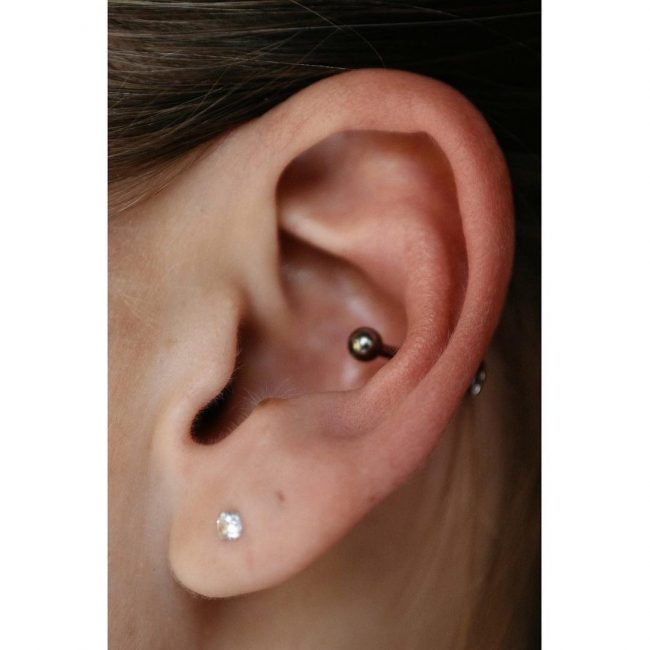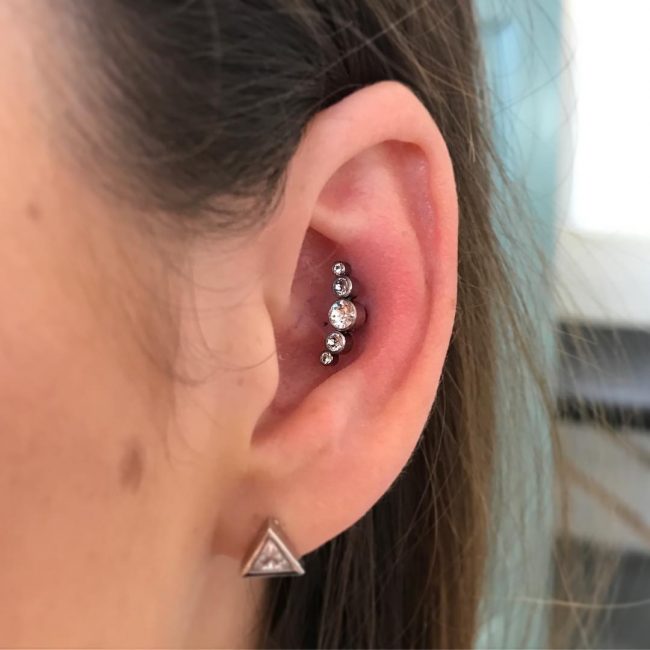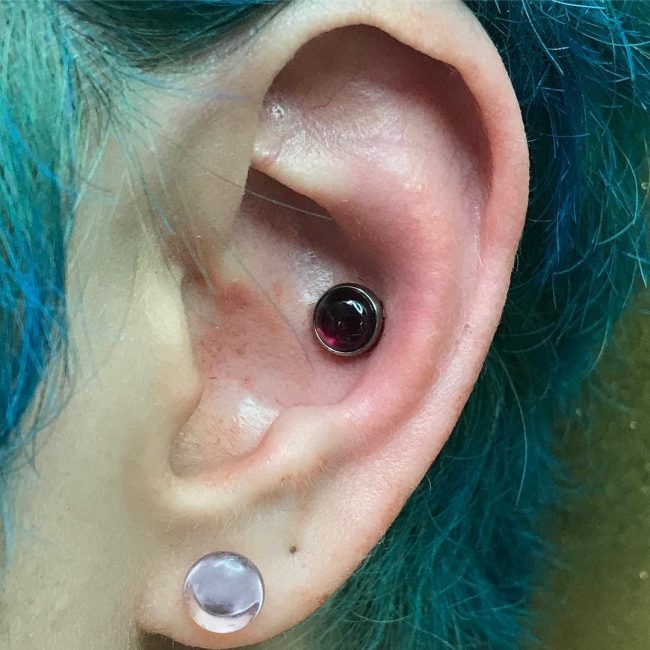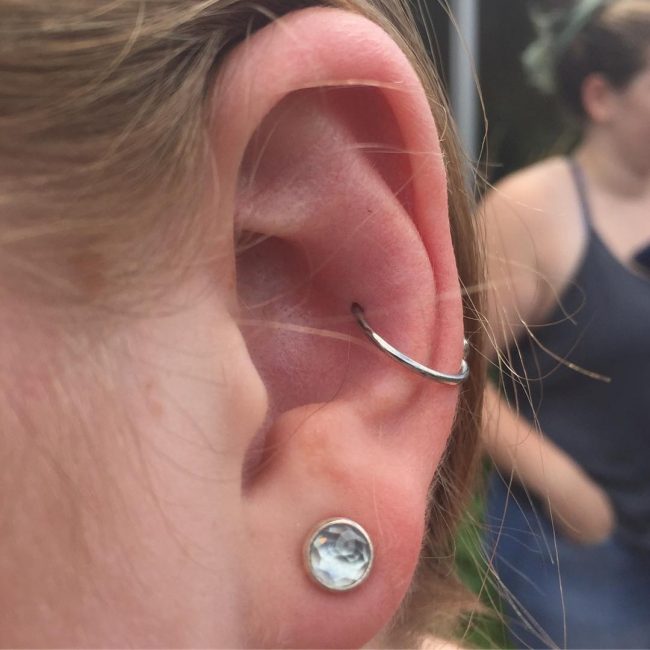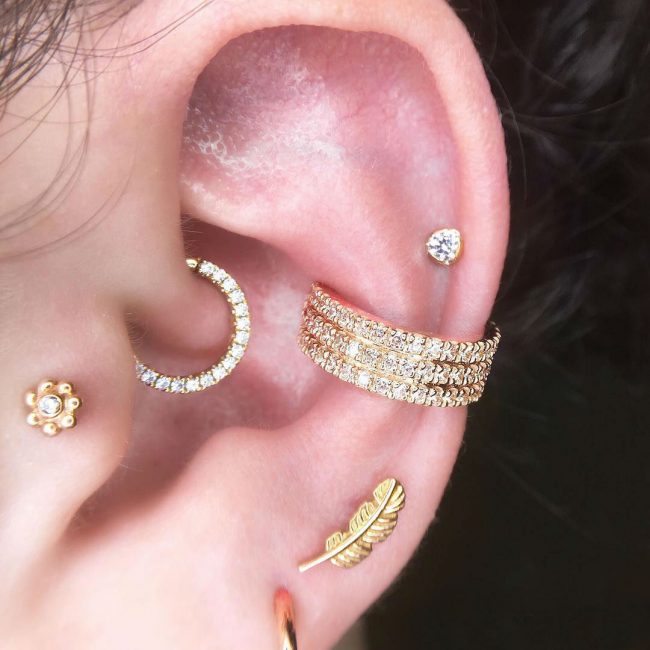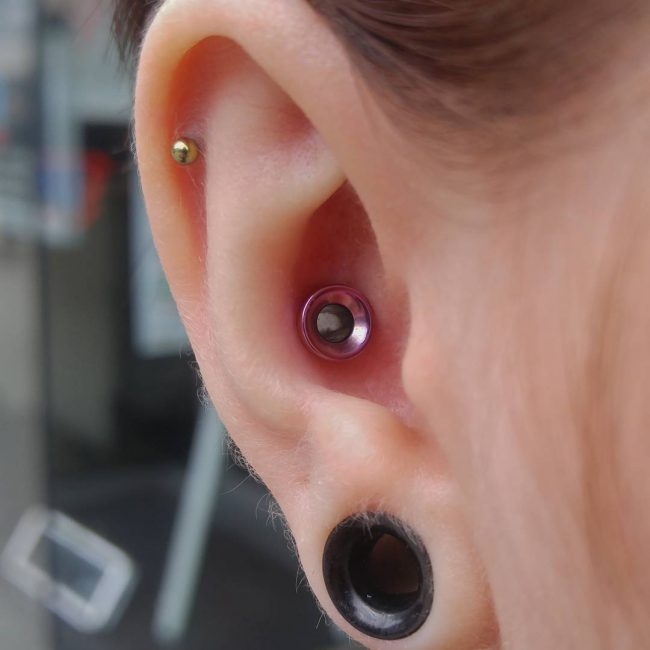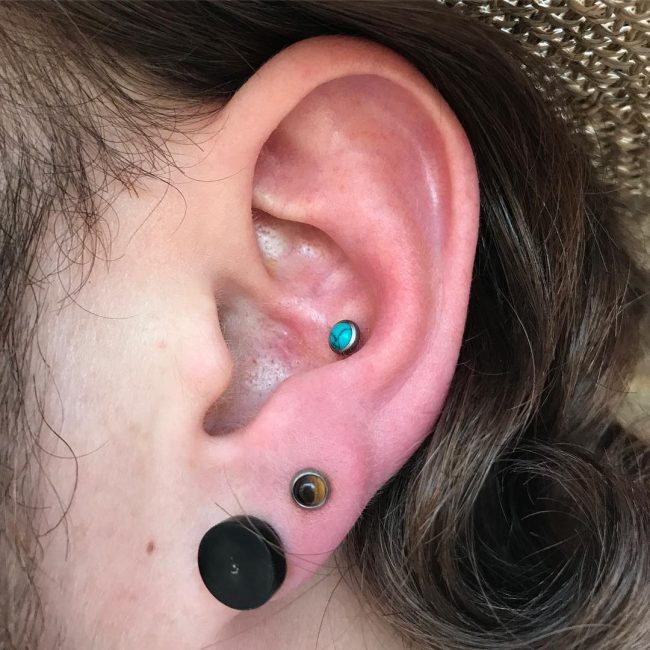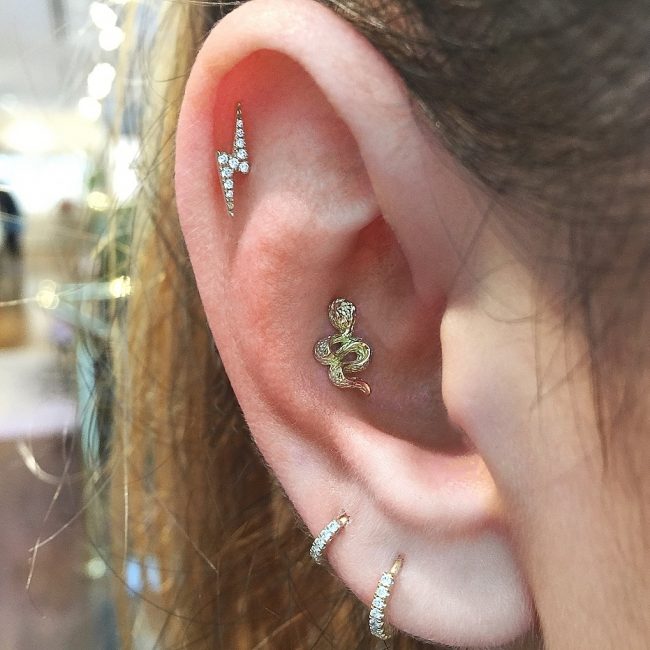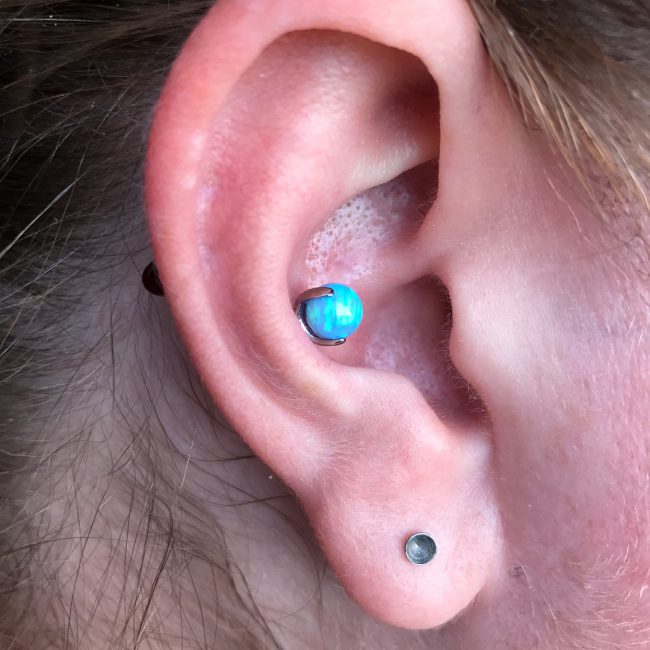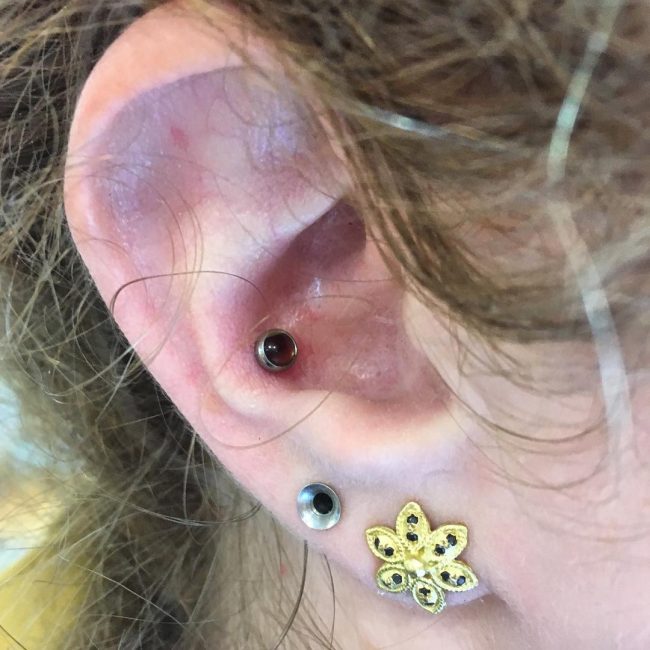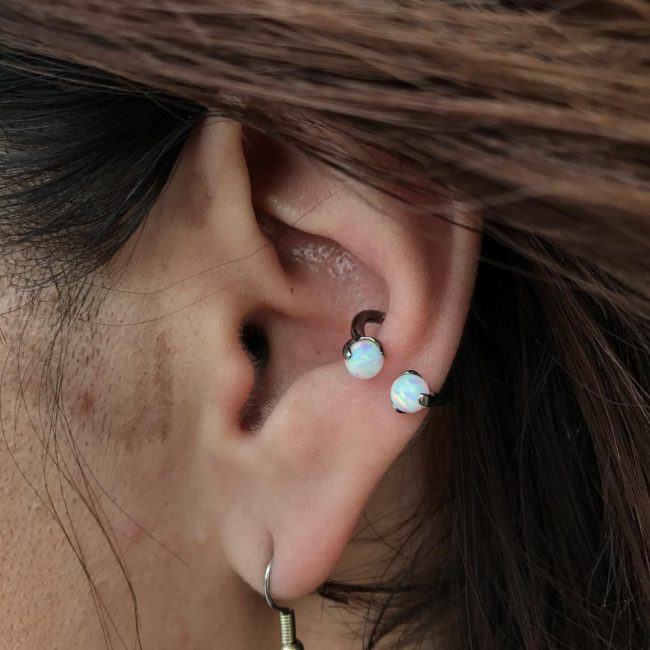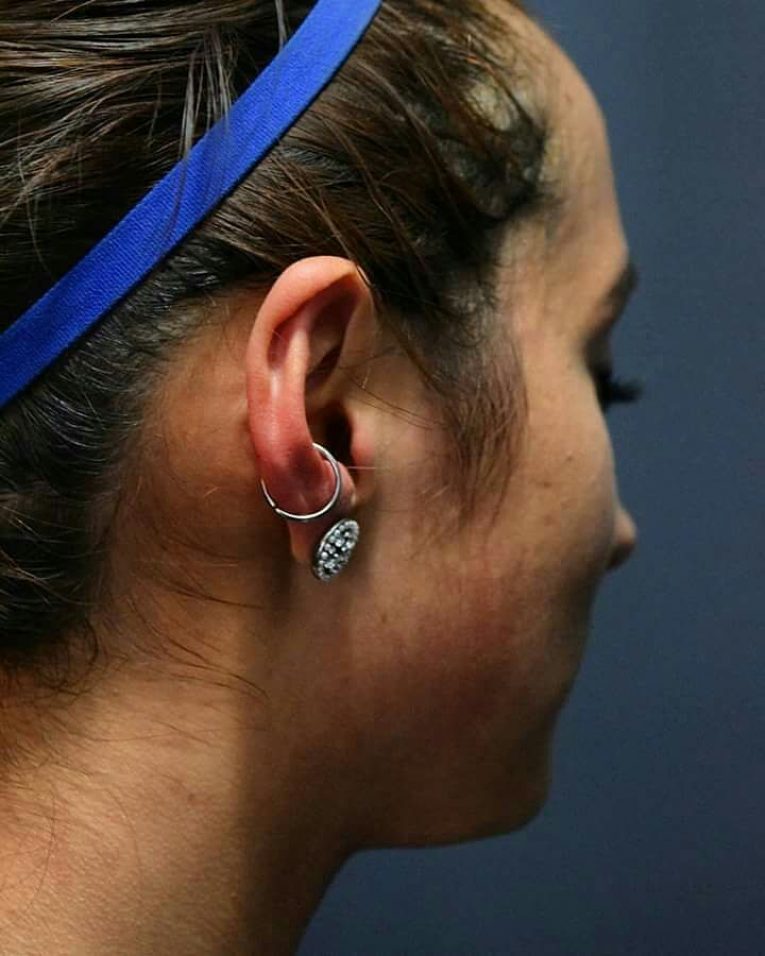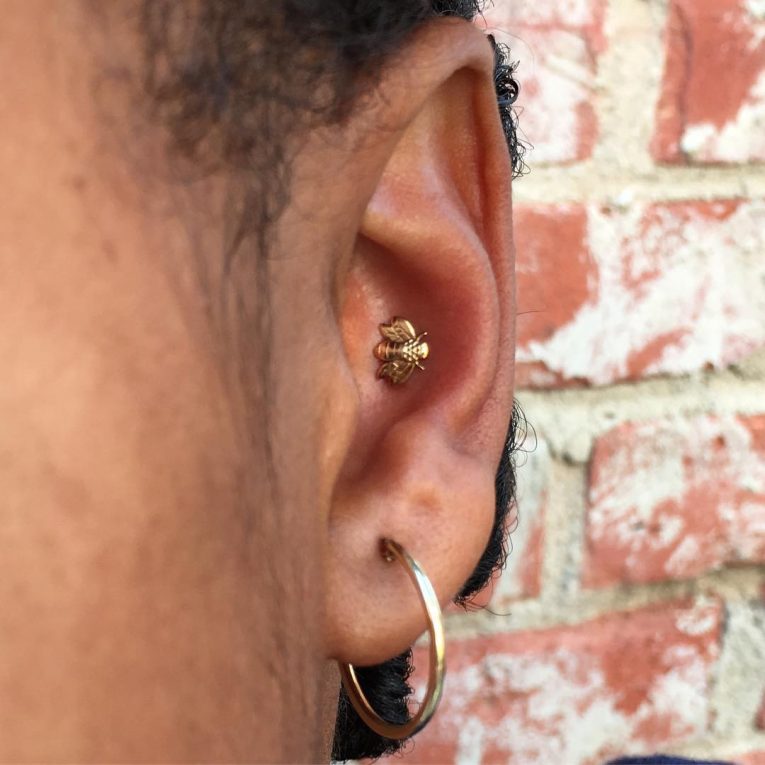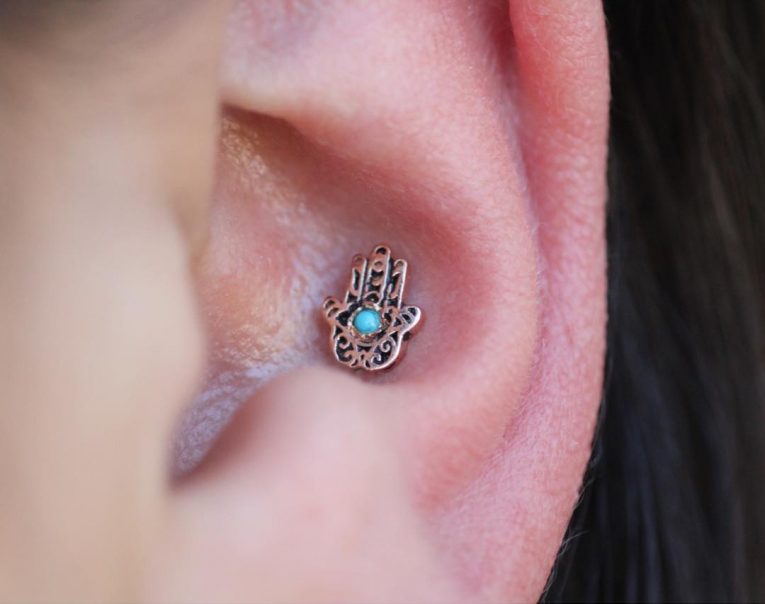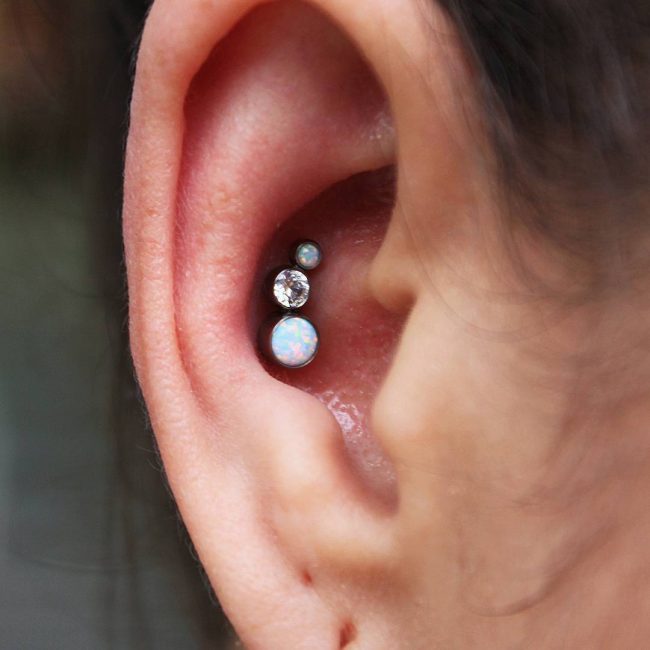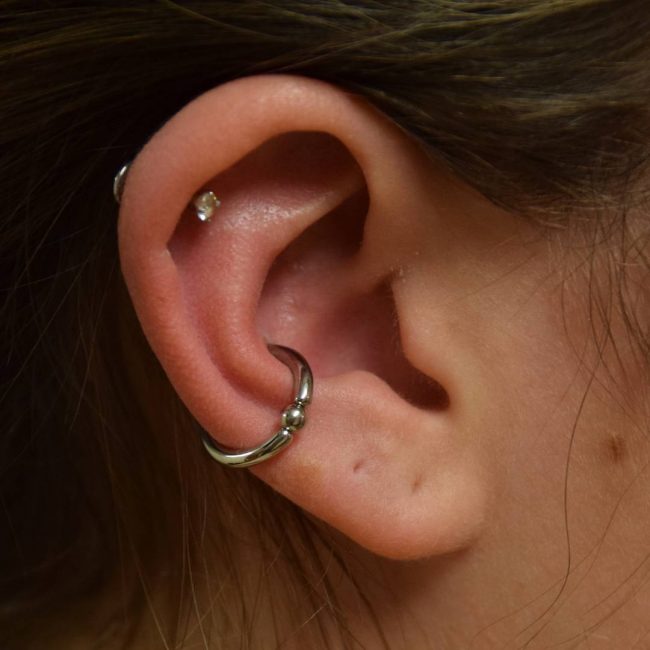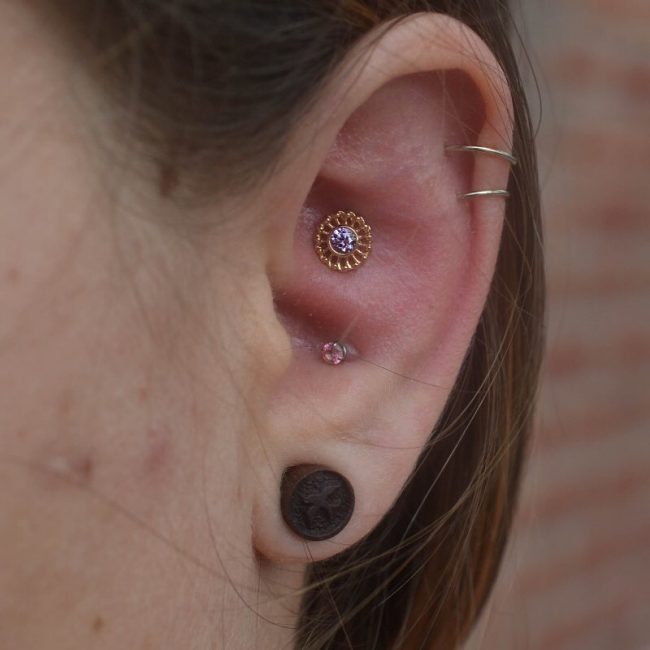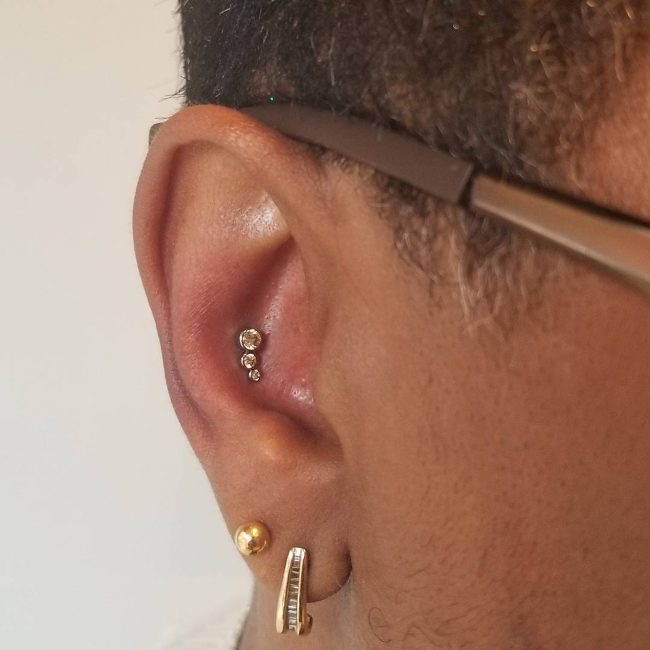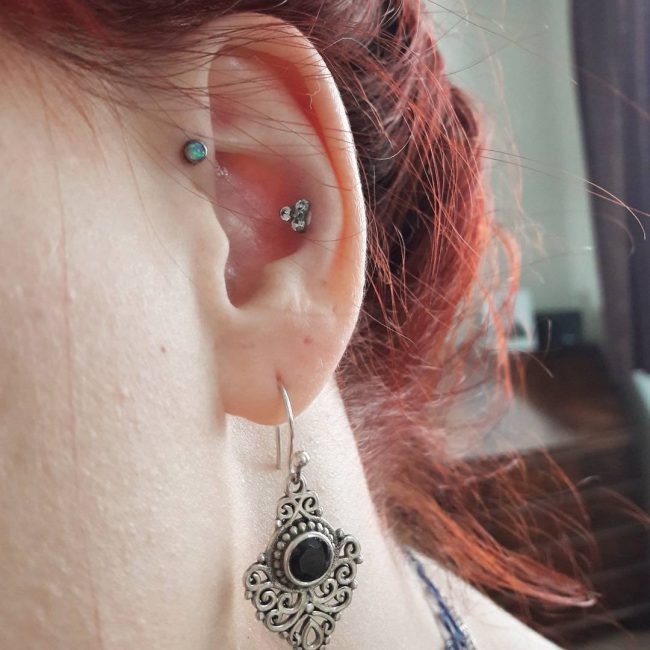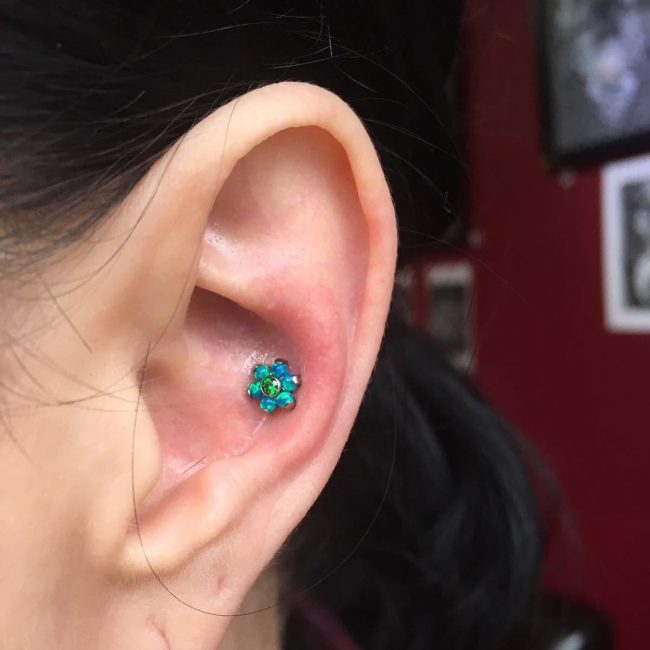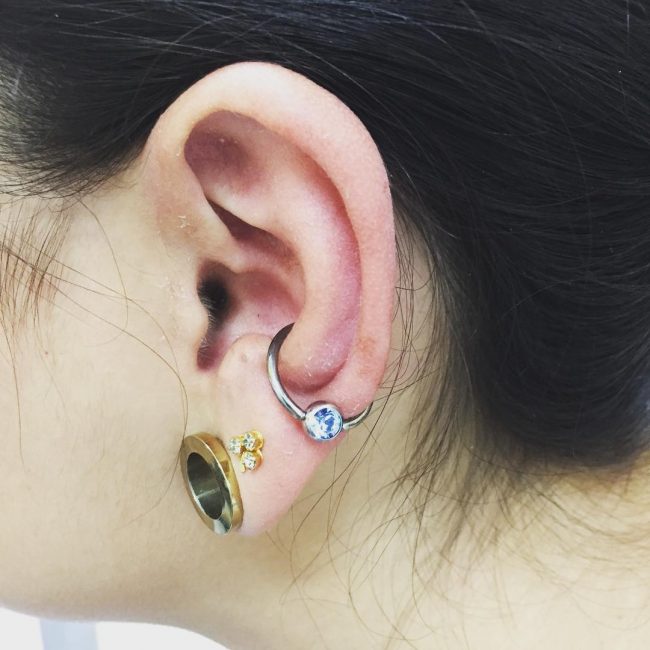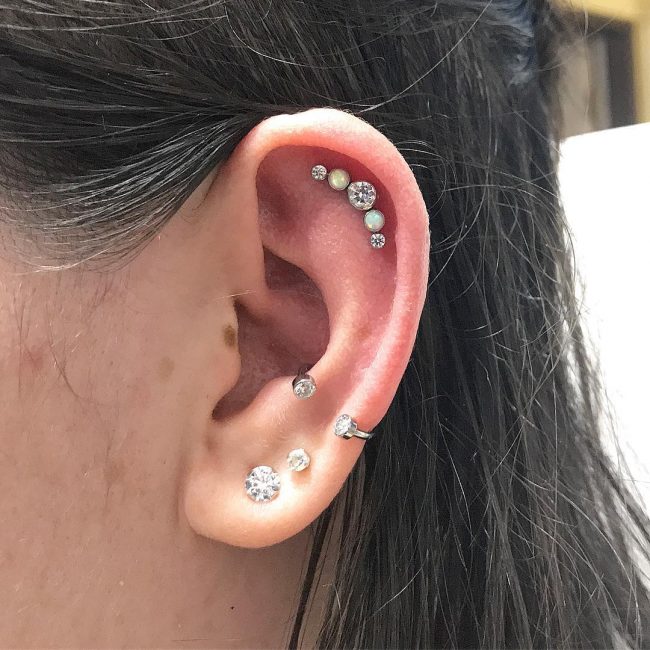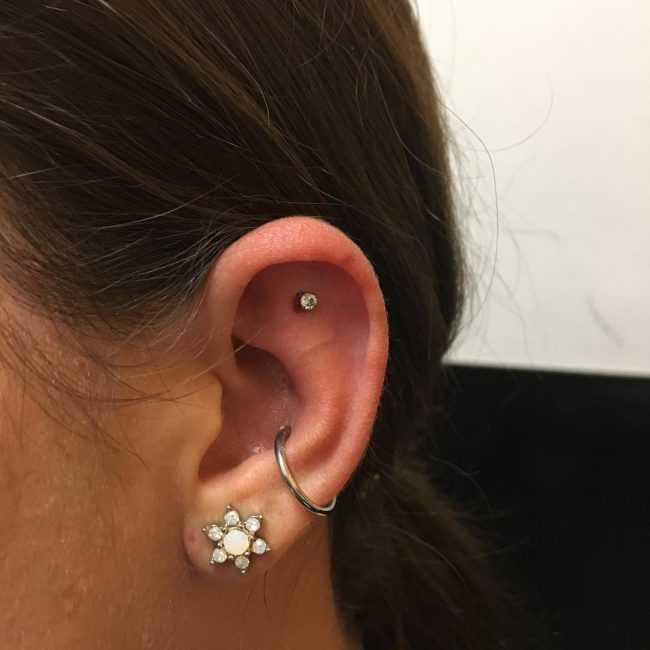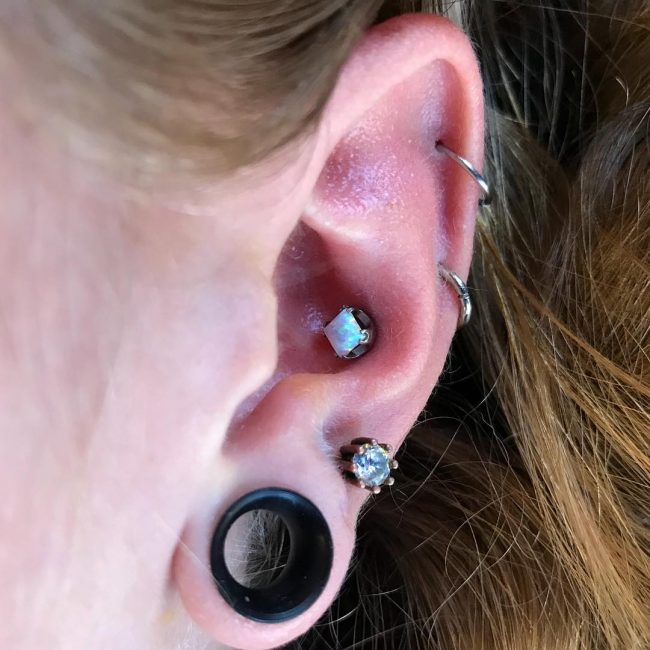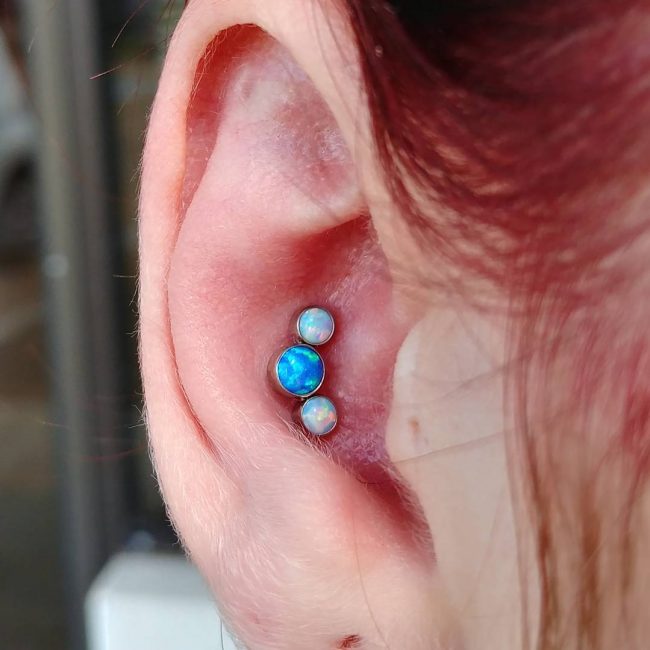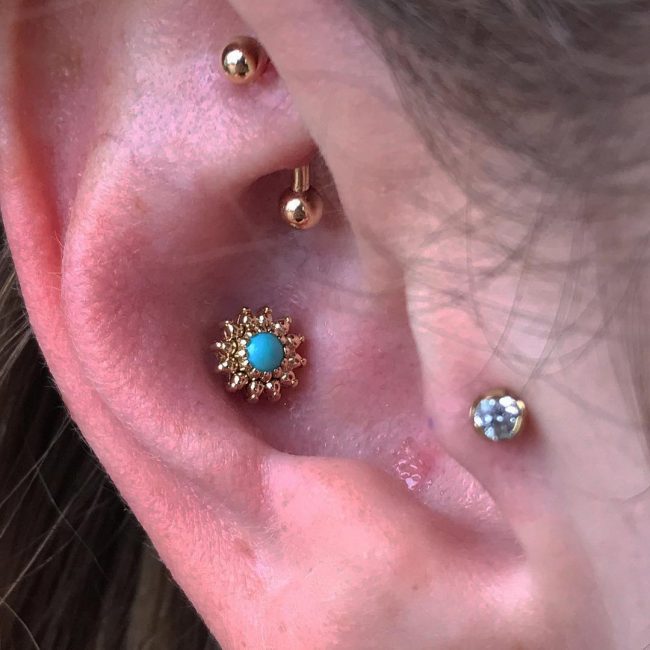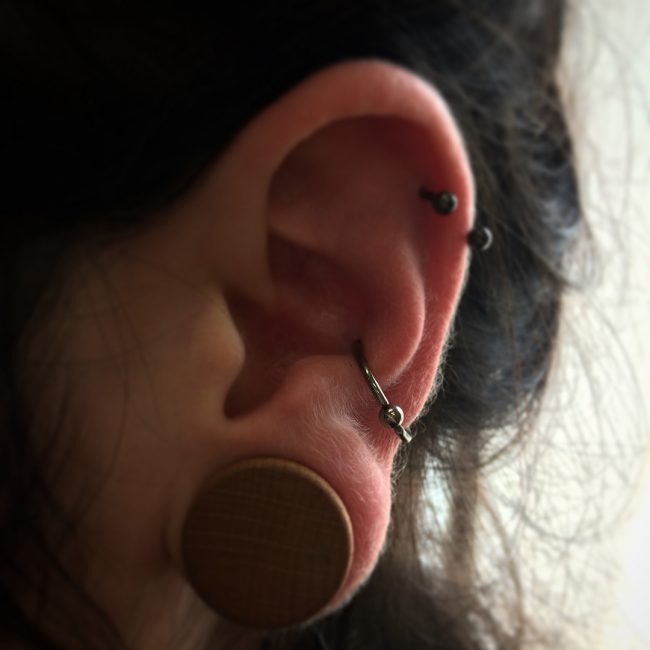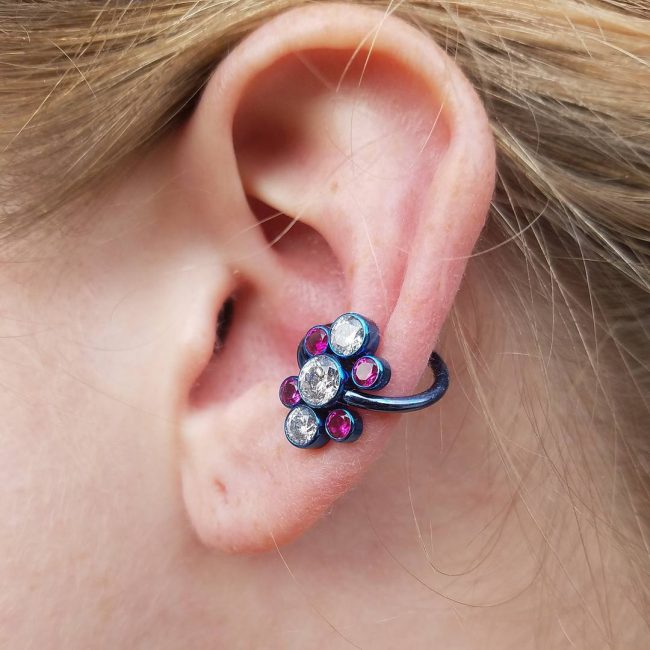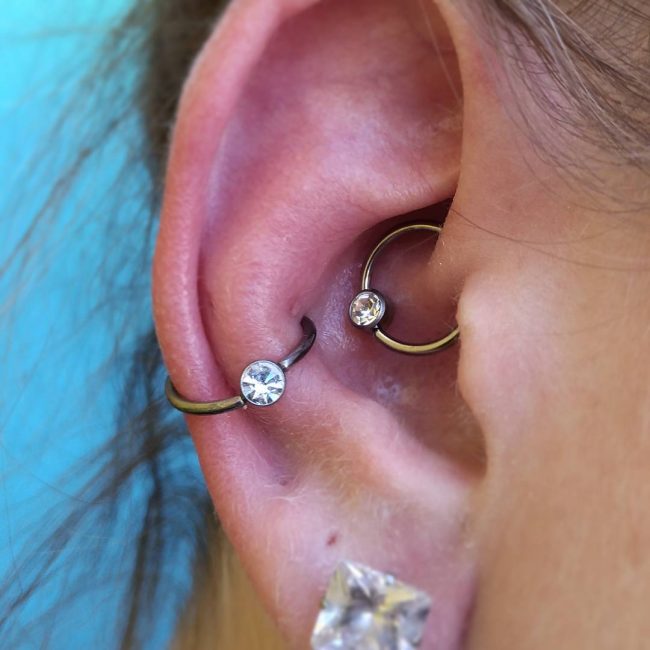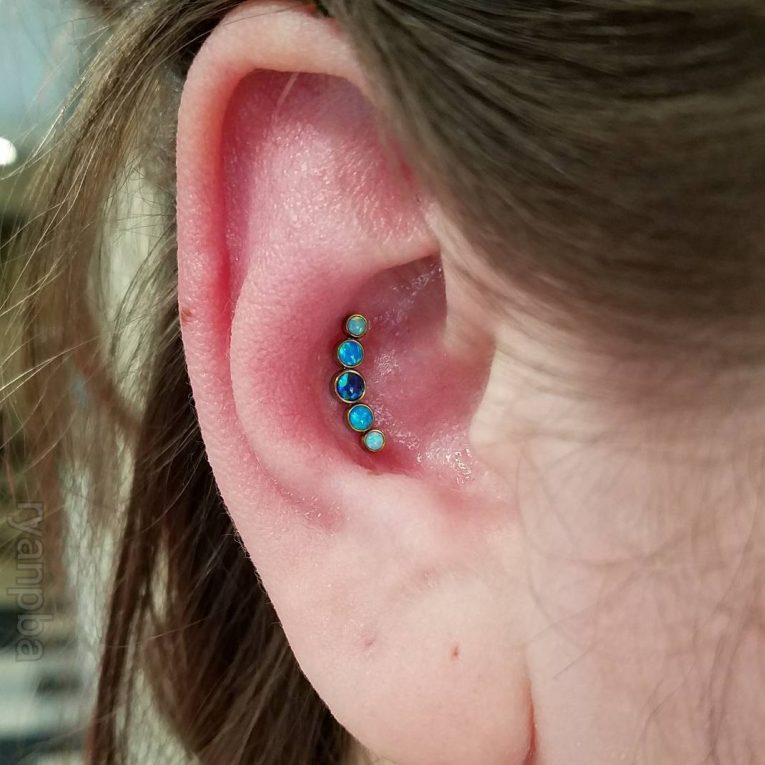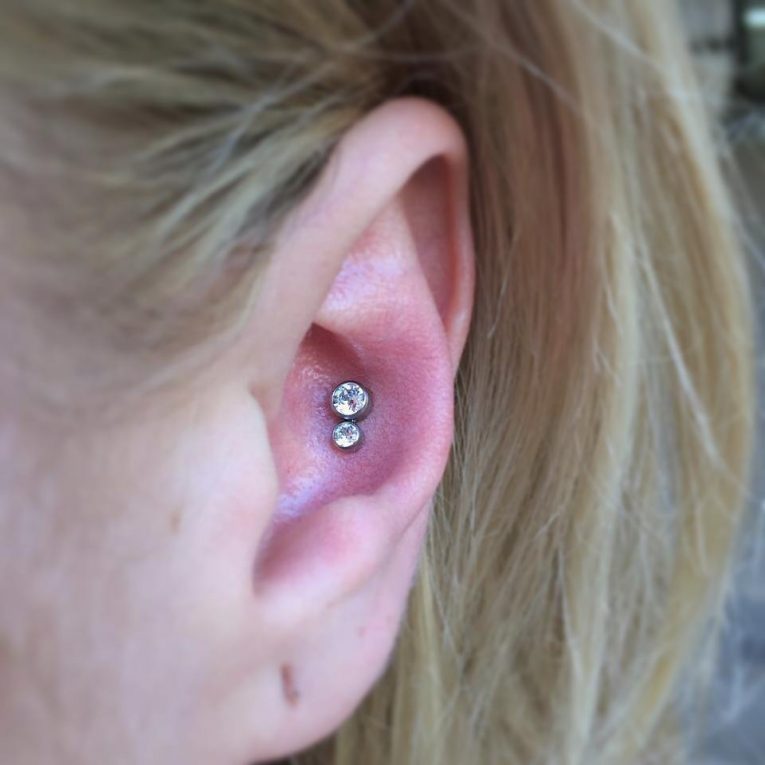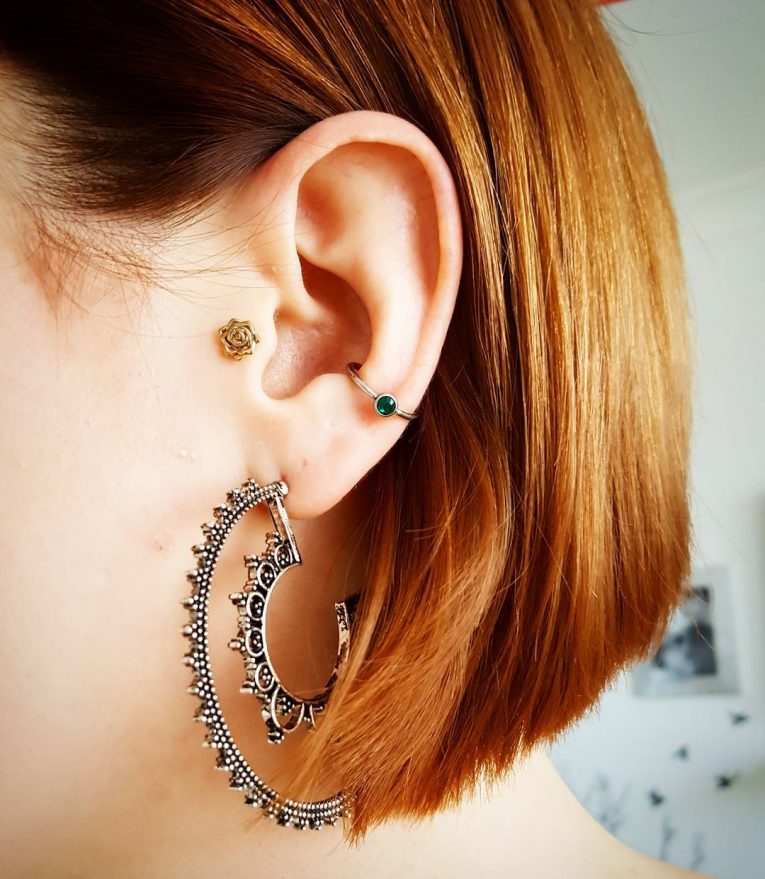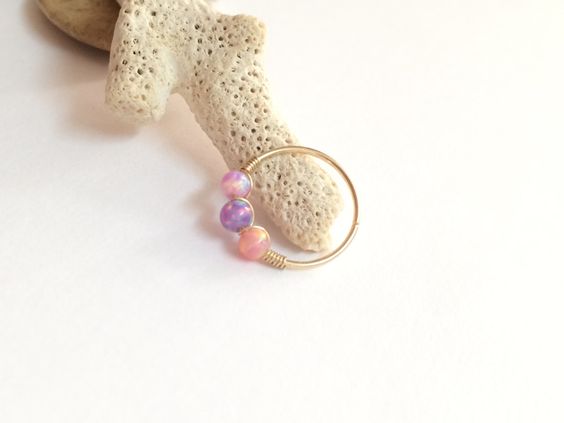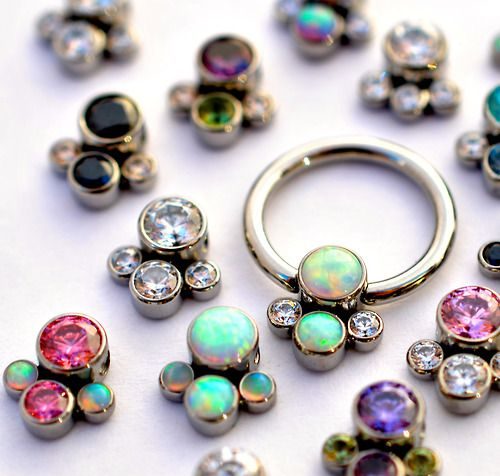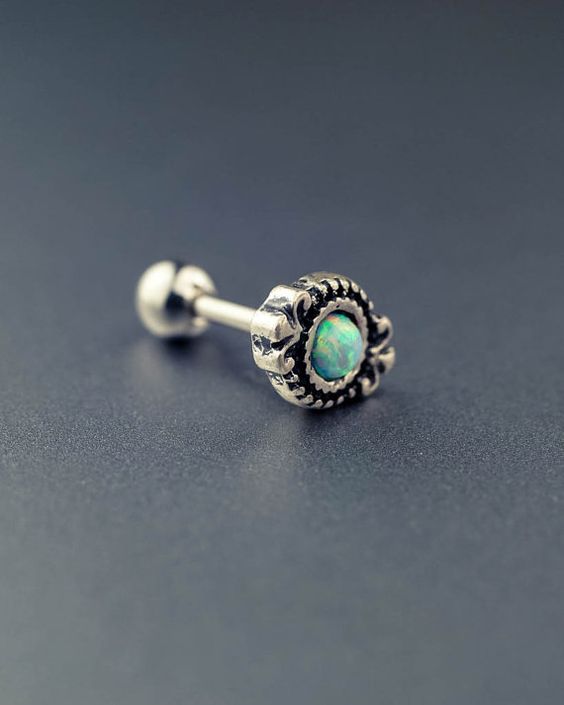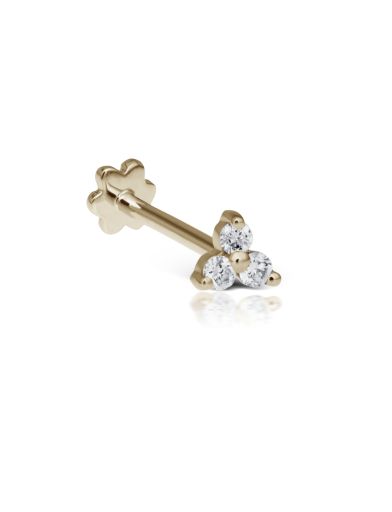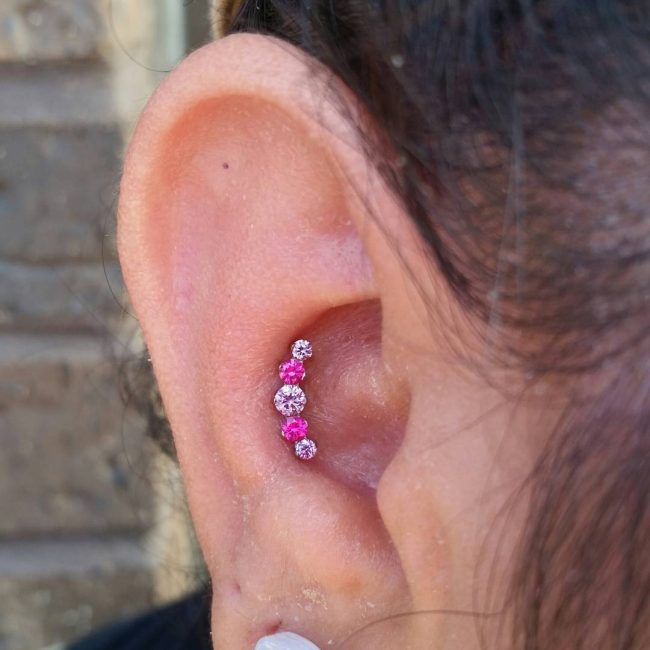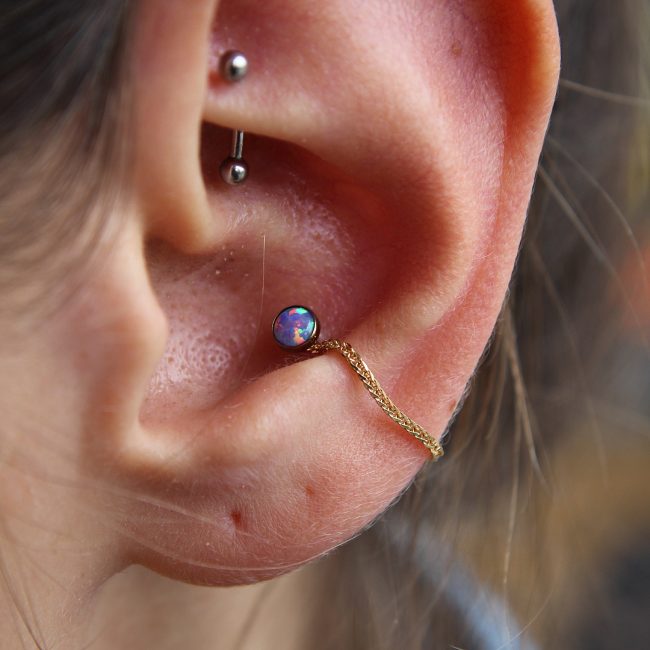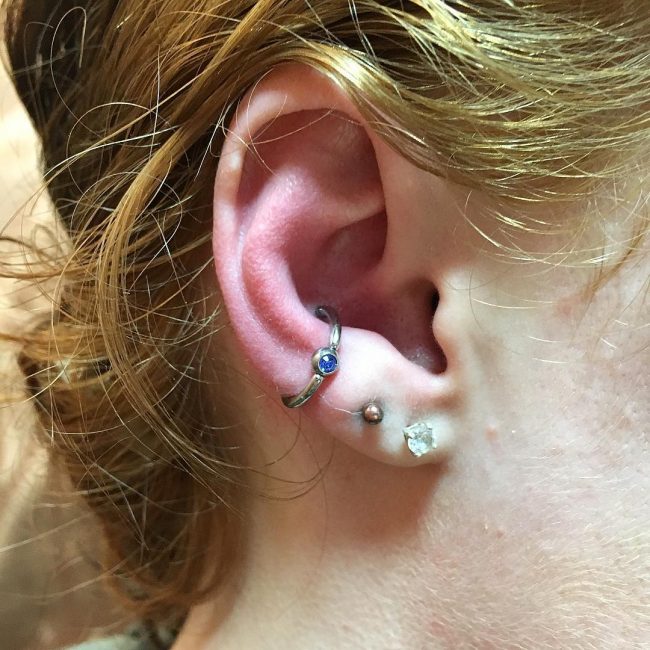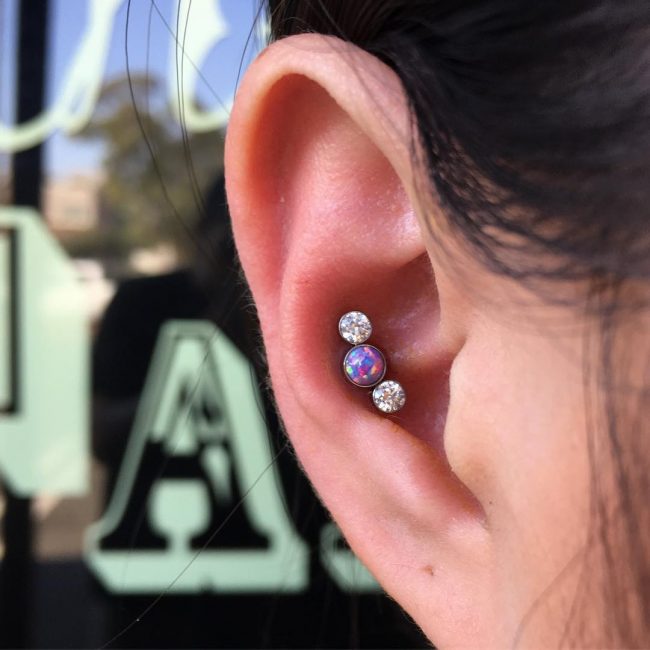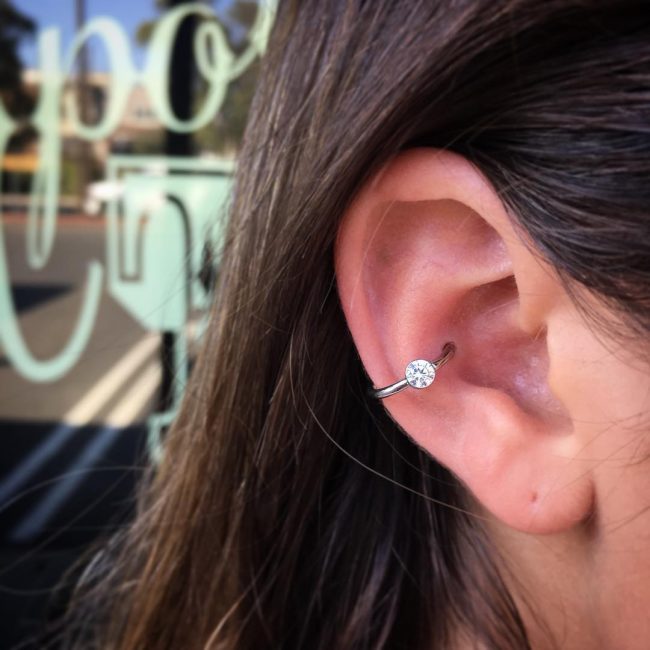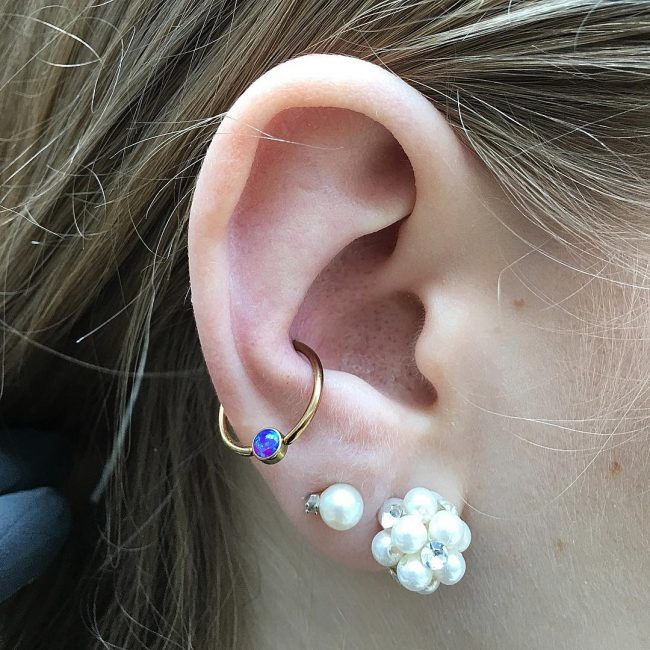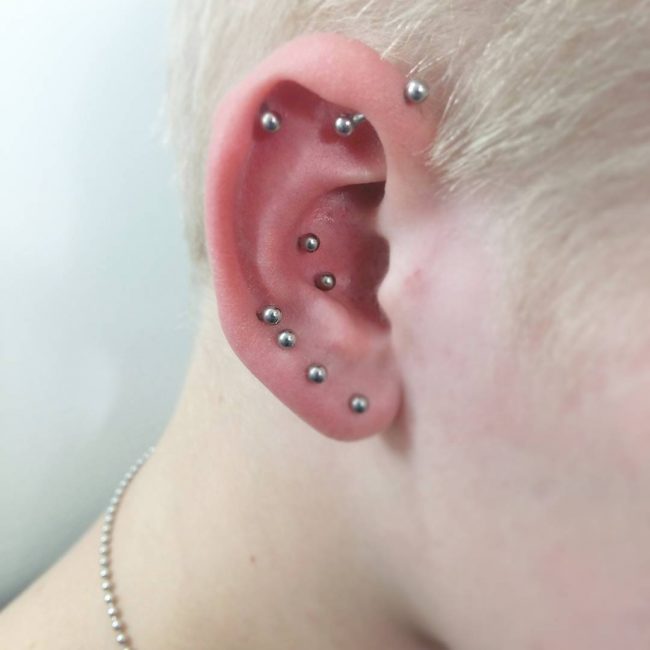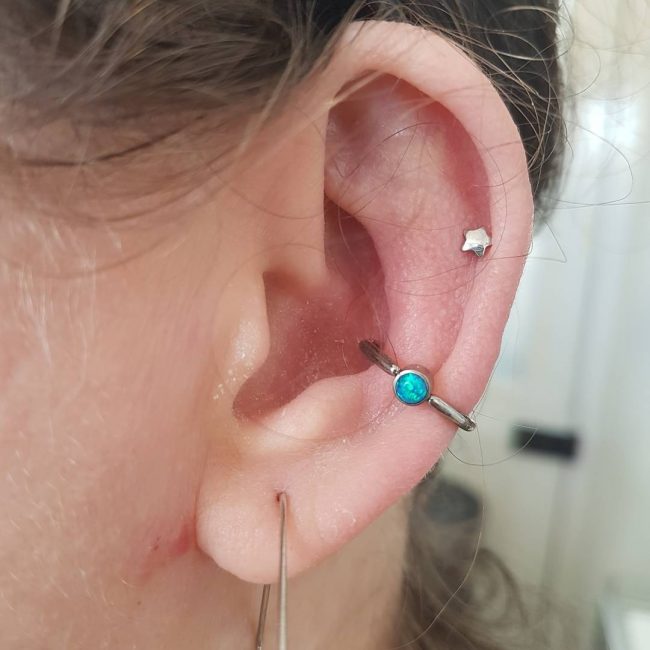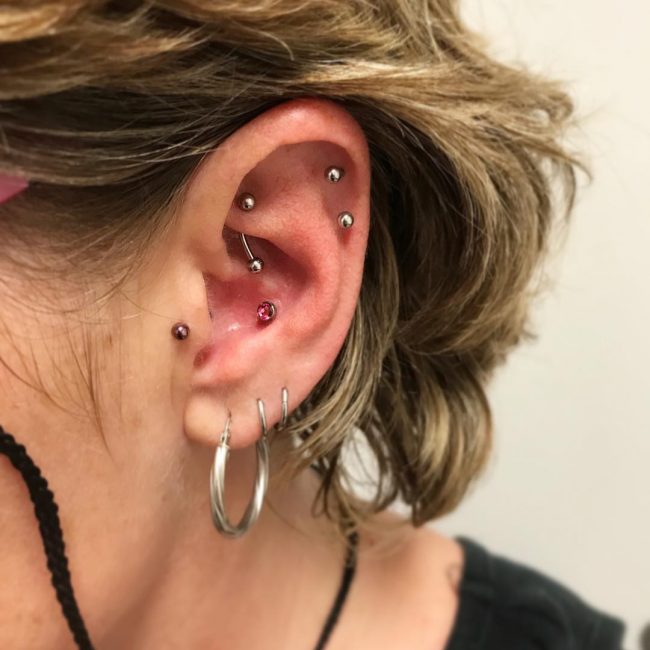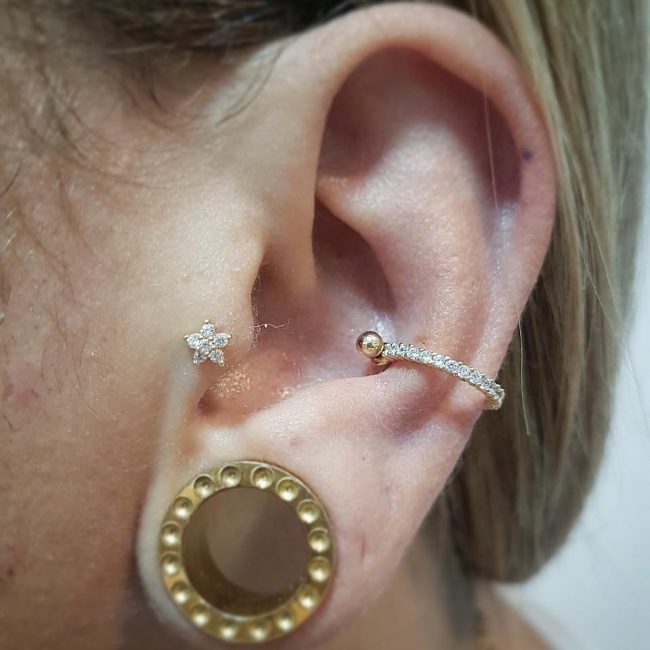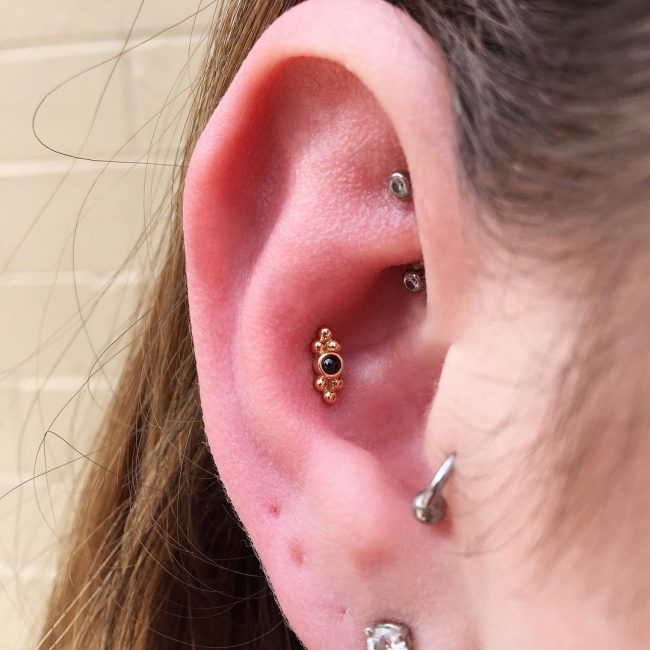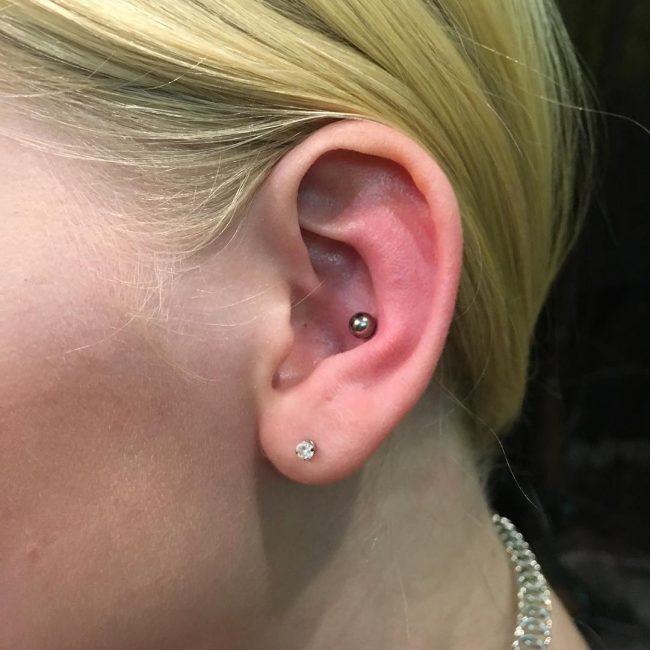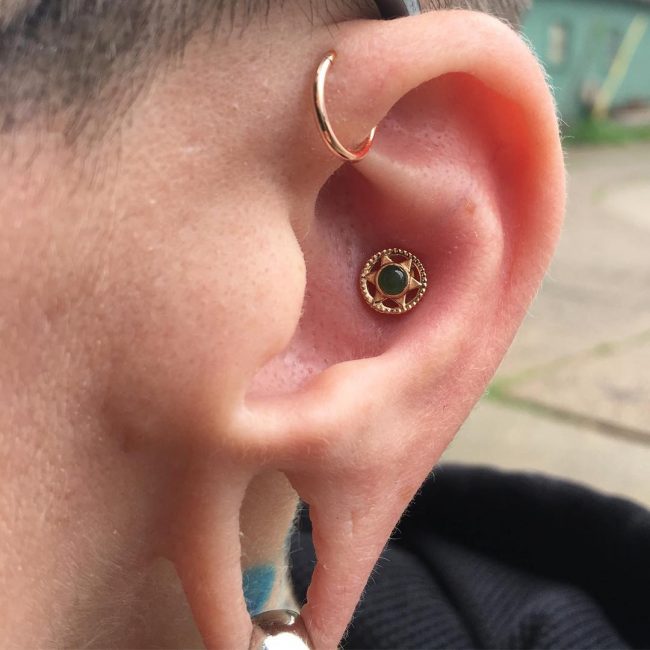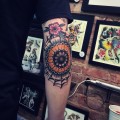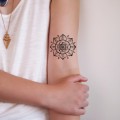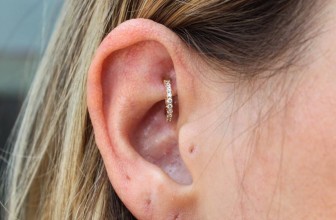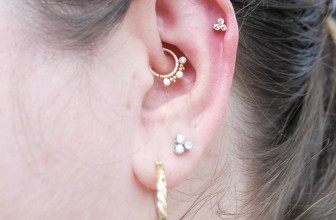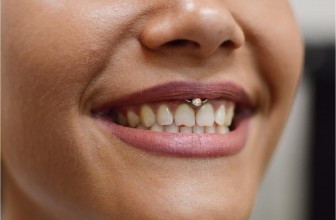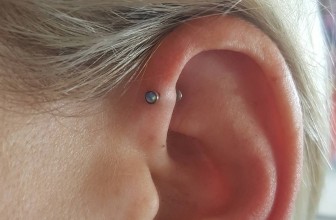60 Trendy Conch Piercing Ideas – All You Need to Know (2019)
Unusual piercings seem to be taking the reign when it comes to body art and modifications. The conch piercing is one of these contemporary piercing types, and it is slowly becoming popular with both ladies and guys. If you are pondering about getting a new piercing and do not want to go with the usual ones this will be a fantastic idea.
Like any other body piercing, various things will not be clear if you are piercing your conch for the first time. And so it is necessary to learn as much about it before getting your ear perforated. Having enough information about this piercing is also important because it is a tricky piercing to perform and you need to know what to expect from the piercer.
Contents:
What is Conch Piercing
A conch piercing will entail perforating the largest section of the cartilage on the ear. It can be one of two sections that are separated by a ridge of cartridge projecting out between them. The lower of the two parts is the inner conch, and the other one is the upper conch. Together they will provide a large area for a variety of jewelry, and so you can get very creative with this piercing type.
The name conch comes from the fact that this part of your ear looks like a conch shell. When getting the piercing the hole will go through the cup shaped part that is just adjacent to your ear canal. And like most other cartilage piercing types the conch will also take a long time to heal, but with enough care, it will recuperate well.
back to menu ↑Types of Conch Piercing
The conch provides quite a large area for you to perforate, but in most instances, the piercer will require you to choose whether to have the perforation on the upper or lower section. And so it is right to categorize this piercing into two broad types which are the inner and outer conch piercings.
However, it is also possible to classify the types according to the number of piercings. You can have a single, double, triple or even more piercings. But it is a good idea to start with one when getting pierced for the first time.
#1 Inner Conch
The inner conch is the most popular type among the two. And if there is no clear description when defining these piercings the term “Conch” will in most cases refer to the inner conch piercing.
The placement of this piercing is on a particular part of the cartilage that is at the center of the ear and adjacent to your ear canal (the cup-shaped area). If your cup-shaped cartilage is large enough, you can have a large gauge piercing or multiple small ones.
#2 Outer Conch
The outer conch has a more unusual appearance, and so it will be perfect for anyone that wants a unique piercing placement. It entails perforating the flat part of the conch cartilage, and it should be between the helix and antihelix part of your ear.
Placement of the perforation is quite tricky, and only a professional and experienced piercer can achieve it. If you do not get it on the exact spot, you can end up getting an antihelix or helix piercing instead of the outer conch.
back to menu ↑Conch Piercing Procedure
The conch piercing is tricky, and it requires some skills and experience to do it right and to ensure quick healing without complications. Although you can still make the piercing on your own, it is safer to get it from a licensed piercer that operates from a clean and registered studio.
When piercing the conch the first step, just like with any other piercing, is to clean the ear with a disinfectant or alcohol to kill off any bacteria that cause infections. The piercer will then mark the spot that you want to perforate using a pen or any other marking tool. If you are not sure where you want to have the piercing the piercer should advise you according to the anatomy of your ear.
When making the actual piercing, the piercer will either use a sterile hypodermic needle or a gun. The choice between the two will also depend on the anatomy of your ear. However, most piercers prefer to use a needle with a 14g or larger since it will be easy to maneuver during the perforation. And like any other piercing, the piercer will insert the needle as quickly as possible to minimize pain.
After making the hole, the professional will wipe the blood with a cloth (make sure they use a clean and disinfected one) and then insert the jewelry. It is also important to choose a light jewelry that will not put a lot of strain on the wound to help the piercing heal fast and to prevent infections and excessive inflammation.
The cartilage on the ear is not easy to stretch out, and so if you prefer a bigger hole, you should get it at the onset. For this, the piercer will use a dermal punch which looks like a regular paper hole puncher. But, it is worth knowing that piercing with a dermal punch is more painful and the hole that you get will require extra aftercare as it heals.
back to menu ↑Aftercare
Piercing does not stop at getting the actual hole because the aftercare is also as important because it determines how and the speed at which the piercing will heal. Proper hygiene is always the most important element of aftercare. Keeping the piercing and the surrounding areas clean will keep germs and bacteria out to minimize the risk of getting infections.
The piercer will give you enough advice on how to care for the piercing before you leave. But, the care is all up to you. The first few days are always the hardest, but the piercing should feel better in a couple of months. However, it will take 6 or more months to heal completely, and so it is important to know how to keep it clean during these sensitive months.
How to Clean the Piercing
- Always start by scrubbing your hands thoroughly with soap and running water or use a disinfectant.
- Prepare a saline solution with warm water and salt (use four tablespoons of salt for every gallon of water).
- Wash the area around the perforation with antimicrobial soap (an unscented one) and rinse with some warm water.
- Soak a ball of cotton in the saline solution and use it to dab on the piercing.
- The last step is to pat dry with a clean towel and repeat the entire process at least twice every day.
Helpful Aftercare Tips
- A barbell is the best choice for the initial piercing as it lessens the probability of trauma, unlike a ring which can be pulled or get caught on something.
- You should never tug or rotate the jewelry until the piercing heals completely.
- Avoid the temptation of removing the crust that forms around the perforation because it can freshen up the wound and lengthen the healing time.
- Make sure you do not touch it with dirty hands.
- Always keep the piercing and the area around it dry by patting it dry with a clean towel after a bath.
Possible Complications
The conch piercing is prone to the same complications as any other cartilage piercings. And so there is nothing specific that you will need to watch out for during the healing phase. If you follow the aftercare instructions that the piercer will give you, maintain a healthy diet and proper hygiene the piercing should heal fast and without any complications.
Migration and rejection are always possible with most piercings, but it is unlikely for any piercing on the conch cartilage to get either of the two. But, you still need to take all the necessary precautions to prevent them. And if you notice common signs of rejection like swelling, soreness or a green puss discharge you should seek medical help immediately.
Infection is the other possible complication that you need to watch out for with this piercing. If you do not follow a proper care routine, you might start noticing redness and swelling around the piercing which is a sign of infection. Since this piercing involves puncturing multiple layers of cartilage, infection is highly likely to develop if you do not take care of it.
Also, it is possible for infections to develop between the layers of cartilage which can be quite hard to treat. And since the body cannot replace cartilage, any nasty infections can leave permanent damages on the ear. You should watch out for common infections signs like swelling, redness around the piercing and continuous discharge of pus.
back to menu ↑Preventing Complications
Proper aftercare is the best way to prevent infections and other complications. However, it is also important to get the piercing from a professional and in a clean environment.
When at the studio you should make sure that the piercer wears gloves during the procedure and everything that they use during the process is sterilized. Your choice of jewelry is also important in preventing rejections and migrations.
back to menu ↑Jewelry
You will have more than enough options when it comes to picking jewelry for your piercing. Captive bead rings, labret studs, and circular barbells are some of these options. But despite the many options you still need to put a lot of thought to your choice. And this is because you should not change it until the piercing heals completely.
For your first jewelry, you should go for something light and simple to ensure that it does not affect the healing process and leaves enough room for cleaning the piercing. A professional piercer can help you understand what will work best for you.
For smaller gauge piercings any standard body piercing jewelry will work well. If you prefer circular barbells or captive bead rings, you should make sure that the diameter is large enough to wrap around your ear.
If you are getting a dermal punch hole which has a larger gauge you should go for flesh tunnels, plugs, and eyelets. Regardless of the jewelry style you choose, it is also important to pick a suitable material. Materials like surgical stainless steel, gold, silver, and titanium are the best for your conch piercing jewelry.
back to menu ↑FAQs
Q: How badly does it hurt?
A: Piercing the conch is quite painful, but the pain is not as intense as many other types. You can expect to get the usual soreness and some sensitivity that come with piercing the cartilage. However, in the piercing parlor or studio, you will not experience a lot of pain because the process is over in a few seconds.
Q: What is the Healing Time?
A: One to two months after the initial piercing the wound should start feeling better and with almost no pain. However, it takes between six and nine months for the piercing to recuperate completely.
Q: Can one have more than one piercing on the conch?
A: Yes, you can have numerous piercings. However, this depends on the anatomy of your ear. The larger the conch, the more the piercings you can get. In most cases, the outer conch is the best place to have multiple piercings.
Q: Which is the best jewelry for the piercing?
A: There are many options because the conch is quite flexible when it comes to the jewelry. However, most piercers will advise you to start with a curved or straight barbell as they are more comfortable during the healing phase.
Q: How much will it cost?
A: You can expect to pay anything between $40 and $80 to get a piercing. The prices will vary from one geographical location to the other, but the reputation of the studio/piercer will also influence the price. Some of the top and reputable piercers can charge upwards of $150 for one piercing.
back to menu ↑Emerging Conch Piercing Trends
Although they are still not as popular as the ear lobe piercing, conch piercings are steadily catching up. Many people favor them because they offer many jewelry options. Nowadays some people will have horseshoes, hoops, and labret studs as their initial jewelry.
There is also a tendency to add gems and opals and even use colored titanium ear piercing jewelry. Getting multiple piercings on the conch is also becoming a popular trend and getting anywhere between two and four piercings or even more is no longer uncommon.
back to menu ↑Conclusion
If you are contemplating about getting a conch piercing the right idea is to get it from a professional piercing. It will also be important to determine whether you want to have it on the inner or outer section and also choose jewelry that you will be comfortable wearing for many months.
Also, you should be ready to take care of it for many months because cartilage takes a long time to recuperate. This piercing looks awesome, and you will be happy with the results if you take good care of it as it heals.

